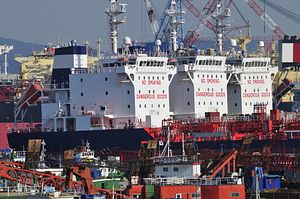According to former Assistant United States Trade Representative for Congressional Affairs Luis Jimenez, the Korea-United States Free Trade Agreement (KORUS FTA) is the most sophisticated free trade agreement signed by either country, not for its unprecedented expansion of market access for both countries, but for its significant advancement of bilateral cooperation in the professional service industries. The most notable element of the final text, which successfully came into force on March 15, 2012, delineates cross-border trade in services, specifically in regards to legal entities and telecommunication corporations.
Having signed the KORUS FTA and the Korea-EU Free Trade Agreement fairly recently, South Korea has been investing in expanding and deepening its trade policies with both established trading partners and emerging markets. In this light, Korea is now looking to sign a bilateral free trade agreement with China: South Korea’s single largest trading partner. Trade with China (ex-Hong Kong) accounts for 21.8 percent of Korea’s overall trade according to 2012 IMF Direction of Trade statistics. That number is only going to increase in the future even if trade patterns continue at the status quo. However, some experts say Korea should hold off on signing a bilateral trade agreement with China in favor of pursuing a more ambitious regional trade pact: the Trans-Pacific Partnership (TPP). Seoul has expressed its interest in joining the negotiations for the TPP; the 12 member states that are currently party to the ongoing trade negotiations constitute 40 percent of the global economy.
Though Korea will be holding preliminary bilateral talks for the TPP starting this month, the Ministry of Trade in Korea has expressly prioritized the China-Korea trade deal over the TPP. Why would Korea aim to forego trade with 40 percent of the global economic traffic in favor of further deepening its dependence on a single country – a country that supports its volatile northern counterpart? Simply put, Korea is entering into a game of meelddang – “push-and-pull.”
Currently, as the trade deals stand, Korea is in a very comfortable negotiating position. Given the fairly overt struggle for regional hegemony in the Asia-Pacific between China and the United States, Korea can strategically play its two major trading partners against one other to gain more concessions in both the China-Korea free trade agreement and the TPP. Korea is officially engaged in a game of power plays between the region’s two biggest players. In a recent article published in The Diplomat, Jin Kai notes that, “Reaching out to Seoul is a part of China’s counter-measures to the U.S. ‘pivot to Asia.’ From the perspective of alliance politics, closer ties between Beijing and Seoul may pull the rug out from under the United States’ feet.”
South Korea stands at a critical—but exciting—juncture with its trade and economic policy. It can successfully maneuver itself to gain concessions from China on controversial issues like agriculture by showing the cards on the negotiating table for the TPP, all the while taking advantage of the fact that TPP negotiations have locked in 12 other countries with their very public desire to conclude talks and execute a trade agreement. However, further stalling negotiations for either agreement could cost Korea its seat at the TPP table (as schedules and tariffs are set along with substantive text on issues such as agriculture), and thus, lose its upper hand to China in regards to bilateral trade.
In this light, the question is where does Korea stand? And what should its next move be? Although Seoul has enjoyed a very warm relationship with Beijing as of late, well noted by the many scholars reporting on the region, a China-Korea free trade agreement would only deepen Korea’s dependence on China for trade. Though the TPP may demand a lot from Korea, it does gives Korea the opportunity to not only engage with its Asian neighbors, but also to thrive and take on the position of a regional trade hub. In fact, he TPP offers (possibly) more dynamic incentives such as sizable gains in trade compounded by membership to an institutional framework that can help Korea achieve long-term trade and strategic goals.
The active attendance at negotiating rounds and bilateral meetings of U.S. President Barack Obama and his top trade representatives has been one of the catalyzing factors of the Administration’s rebalancing, or pivot, to Asia. However, Seoul has an opportunity to make its own pivot. Although the Korean government predicts increased trade with its ASEAN partners for the 2014 trade year, active and considerate steps need to be taken to make sure such trade does take place. Korea stands, both literally and figuratively, at the center of the Asia-Pacific trading bloc, and as such is among the powers that share an interest in regional and international stability and increased trade. The onus lies on Korea.
Michelle Kwon is currently a Fulbright Junior Scholar to South Korea where she is researching on South Korea’s trade prospective vis-à-vis its foreign policy and national security posture towards Asia Pacific and the United States.

































